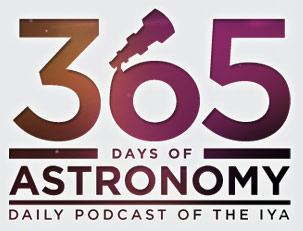Aurora Borealis – Best Light Show on Earth July 21, 2009
Posted by chemfan in Astronomy, Solar and Space weather.Tags: Astronomy, Aurora Borealis, Solar System
1 comment so far
Sergey Zinovichik has his blog at: http://chemfan.wordpress.com/

Aurora Borealis or commonly named The Northern Lights is a natural display of lights in the North Pole regions of our globe. The lights appear as flowing streams of color in the sky taking different shapes and contours and often look like a multicolored curtain coming down from outer space.
The light show comes to us courtesy of our Sun. Electrically charged particles produced on the Sun are ejected in all directions and a great amount of them head toward Earth. As these particles (called solar wind) encounter the Earth’s outer regions, the magnetic field of the Earth begins to interact with the particles.
What results is a change in energy and direction of the particles: they head along magnetic field lines toward the poles of Earth. Just like a bar magnet has its field lines returning at the opposite ends so the Earth’s magnetic lines come together around the poles. This is why the aurora borealis is brightest and most easily seen in the northern regions of our planet.

Image taken from Wikipedia.org
The colors that we see in the aurora get produced from the collision of solar wind with atoms and molecules of our atmosphere. Every atom and molecule has around them orbiting electrons. The electrons sit in different energy levels with the highest energy electrons being furthest from the nucleus.
Although the orbits of electrons around the atom are complicated we can represent their arrangement with a simple picture:

We can see the first important aspect of orbiting electrons: They can only have certain energies analogous to planets orbiting at certain distances from the Sun.
When a fast moving solar wind particle collides with an atom the electrons in the atom “jump up” to a higher energy level. The electrons in this excited state are usually unstable and will eventually fall back down releasing the energy they absorbed. The way electrons release energy is in the form of electromagnetic radiation or what we would call light.

Image taken from HowStuffWorks.com
The type of light emitted depends on the type of atom that was excited. This is because an oxygen atom’s energy levels differ somewhat from a nitrogen or helium atom. The energy released corresponds to a certain visible color and the color corresponds to the energy that was lost as the electron returned to its previous state. The colors we see in aurorae are regular because the energy levels in an atom are the same and because electrons can assume only certain quantized energies.
In some aurora red and green colors are prevalent. This is characteristic of oxygen atoms being excited and releasing energy. Molecular nitrogen can produce blue or violet colors. Helium in rare occasions can produce orange light. Compounds of oxygen and nitrogen can produce their own characteristic light.
When a mixture of different colors comes together the aurora we see is colored white just like the visible light from the sun put together from all the colors of the rainbow appears white.

Image Taken from APOD
The beauty of the Northern Lights can sometimes come down from the polar region and become visible at lower latitudes. This is due to periods of high solar wind corresponding to unusual activity on the Sun. In August and September of 1859 The Northern Lights were seen from the Midwestern region of the United State and were very bright. Worldwide reports of unusual aurora intensity and frequency that year were confirmed by magnetographs recording high levels of magnetic activity from the Kew observatory in England.
The southern pole of the planet experiences a similar phenomenon called Aurora Australis or Southern Polar lights and this light show is visible only in the southern hemisphere.
If you are fortunate enough to live in a part of the globe that has auroral displays you will probably agree that the light show that nature displays cannot be rivaled by anything humans can create.

Image taken from APOD
New Impact on Jupiter July 21, 2009
Posted by jcconwell in Asteroid, Astronomy, planets.Tags: Asteroid, Jupiter, Solar System
add a comment
Taken from the article by Nancy Atkinson at Universe Today
Amateur astronomer Anthony Wesley from Canberra, Australia captured an image of Jupiter on July 19 showing a possible new impact site. Anthony’s image shows a new dark spot in the South Polar Region of Jupiter, at approximately 216° longitude in System 2. It looks very similar to the impact marks made on Jupiter when comet Shoemaker-Levy 9 crashed into the gas giant in 1994. (But read the Bad Astronomer’s post that the black spot could also be weather.)
UPDATE (7/20): It has been confirmed this is an impact on Jupiter. Mike Salway shared the news Glenn Orton from JPL has imaged the Jupiter black spot with the NASA Infrared Telescope and he has confirmed it’s an impact.
New Podcast is up at 365 days of Astronomy July 21, 2009
Posted by jcconwell in Astronomy, IYA 2009, moon, Podcast.Tags: EIU, International Year of Astronomy, Podcast
add a comment
A change in the date of our sponserd podcast to TODAY. Link is at:
http://365daysofastronomy.org/2009/07/21/july-21st-astronomy-in-anglo-saxon-england/



